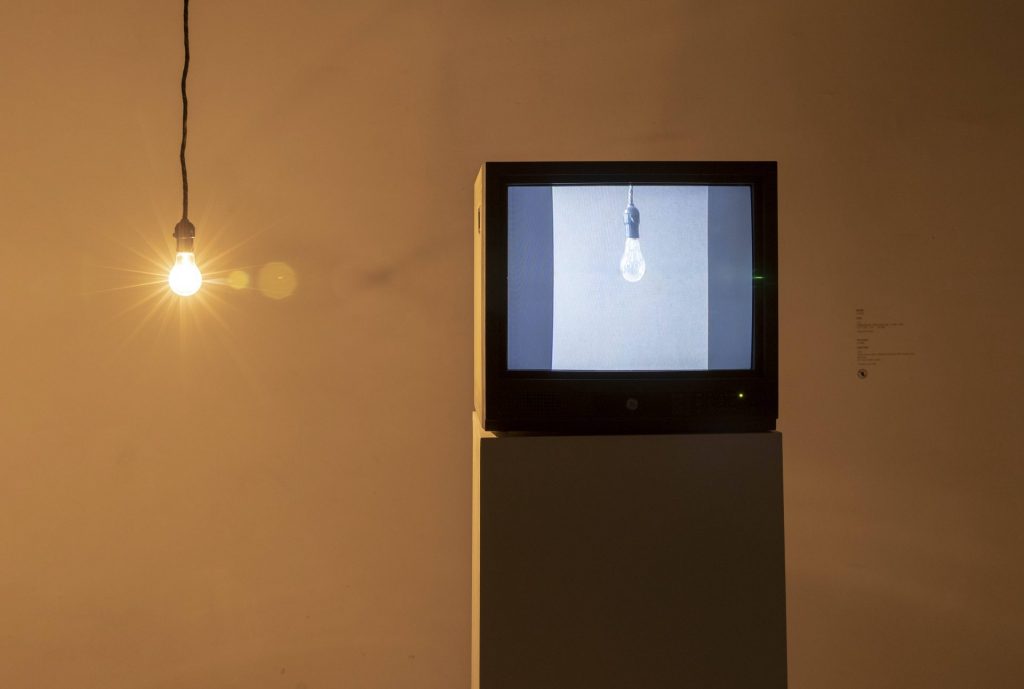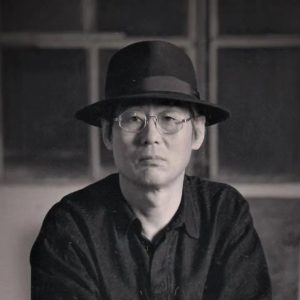Light Bulb, 1975
single-channel video installation (1 light bulb, 1 TV)

Kim Kulim, Light Bulb, 1975. Installation view, OCAT Shanghai, 2020.
Image courtesy of OCAT Shanghai.
Traces of time were stored within the medium called video. It is similar to pausing time and reproducing the past. Consequently, the events of the past are experienced through a new perspective in the present instant. The past and present are in flux and exchange. The work questions this collision or co-existence of the past and present, in other words – Hwan-Weon (환원, 還元).
Kim Machan: “Kim Kulim’s first investigations into the video medium were directed toward the real and the virtual medium specific qualities of light and time. The 1:1 scaled video recording of a light bulb turning on and off in a casual 10 second rhythm is combined in the video installation with the actual light bulb suspended next to the monitor. The light bulb in the monitor alternates with the actual light bulb, shifting recorded time into harmony and conflict with perceptions of real time in a time lapse distortion. Philosophical and empirical questions about the nature of light – the speed of light that directly relates to concepts of time – are summoned in this work in the contemplation of the recorded time and the re-presentation within this video installation of the light bulb that was originally recorded in 1975. The age of the light transferred to our eye from the monitor is light being transmitted now in the live moment, while existing with the contradiction that the light is a recording of a much older light, now over 45 years old.”

Kim Kulim
1936, Sangju, South Korea
Born in Sangju, South Korea in 1936, Kim Kulim lives and works in Seoul. Kim holds a significant status in Korean contemporary art history as a founder of Korean experimental art. Retaining a rebellious attitude towards existing values and customs, Kim has produced a wide scope of experimental works ranging from paintings, prints, sculptures, installations and performances to land art, video art and mail art. He has also been involved in experimental plays, films, music and dance. In 1969, he released Relics of Mass Media, considered Korea’s first mail art and also produced The Meaning of 1/24 Second, a seminal work in the history of Korean experimental film. Kim was a founding member of AG (Korean Avant-Garde Association), through which he led avant-garde artistic practices that emphasized concept and process. In the 1970s, he founded The Fourth Group, an avant-garde art group consisting of young artists and intellectuals in various fields, pursuing intermedia art combining art, theatre, film, fashion and music. Later in the decade, he set off to Japan to begin experimentation with print and video art, and in the 1980s, he traveled to the United States to seek new ways of artistic practice.

